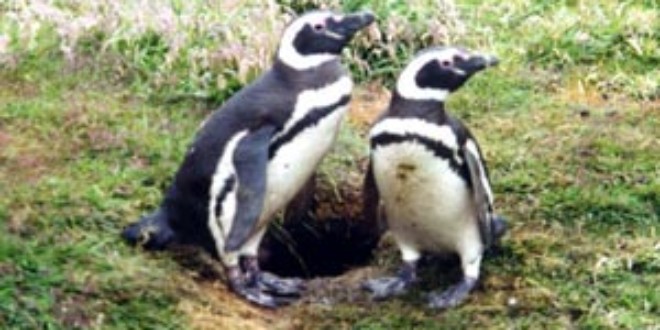Chilean scientists are investigating three mysterious ecological disasters that have caused the deaths of hundreds of penguins, millions of sardines and about 2,000 baby flamingos in the past few months. The events started to unfold in March, when the remains of about 1,200 penguins were found on a remote beach in southern Chile. Then came the sardines — tons of them — dead and washed up on a nearby stretch of coastline. The stench forced nearby schools to close, and the army was called in to shovel piles of rotting fish off the sand.
Farther north, thousands of rare Andean flamingos abandoned their nests on a salt lake in the Atacama Desert. The eggs failed to hatch and, over a period of three months, all 2,000 chicks died. The extent of the damage was discovered in April, during an inspection.
No one knows for sure what caused these three apparently unrelated ecological tragedies, although there are many theories. Global warming has been blamed, as have overfishing, pollution and bacterial disease. In the north, ecologists have accused mining companies of fatally altering the flamingos’ habitat by draining the area of subterranean water.
Whatever the explanations, the events have caused unease. A suspicion that mankind is to blame has created the feeling that maybe Chile should be doing more to protect its spectacularly rich wildlife.
”Chile has very primitive legislation governing the management of its fisheries,” said Alex Muñoz, executive director of Oceana, an international marine conservation group with offices in Santiago. “Our marine resources are facing big problems such as overfishing, and the destruction of vulnerable marine ecosystems by industrial trawling.
The case of the unhatched chicks is perhaps the most disturbing of the three events. Of the six species of flamingo in the world, the Andean is the rarest. There are just 40,000 of them, and about half are in Chile, where they nest on the barren salt flats of the Atacama desert.
They share this harsh habitat with some of the world’s biggest mining companies, which are scouring the desert for its copper. Some ecologists say mining is destroying the area’s fragile ecosystem and threatening its wildlife.
But a more likely explanation for the death of the chicks is that, even by the standards of the Atacama, the summer that has just ended here in the southern hemisphere was unusually dry and hot. That has caused the lakes to shrink, becoming more saline than usual.
Eduardo Rodríguez, the regional head of the government’s environmental protection agency CONAF, said that might have killed the algae the flamingos feed on, forcing the birds to abandon their eggs and migrate in search of food. The micro-algae contain carotene, a brightly colored pigment that gives flamingos their distinctive pink plumage. Other species of flamingo, like those in the United States, eat shrimp, which are also rich in carotene.
(From miamiherald.com, Chile)
 Ocean Sentry
Ocean Sentry




